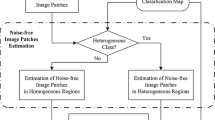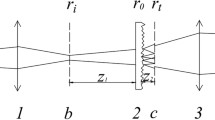Abstract
MingantU SpEctral Radioheliograph (MUSER) can generate the images of the Sun with high time, frequency and spatial resolutions. It employs the aperture synthesis (AS) principle to image the Sun with plentiful solar radio activities. Different from general imaging system, AS records sparse Fourier components of the spatial image of the Sun by recurring to electromagnetic interference imaging principle. However, due to the limited number of antennas, the recorded Fourier components is extremely sparse, which results in very blurring images. This problem is equivalent to convoluting an image with a Gaussian smoothing filter in spatial domain. Accordingly, one can recover an image from its burred version by inverse operation of convolution, namely deconvolution, which was widely known as CLEAN algorithm. This algorithm however does not perform well on solar images characterized by extended source instead point source. In this paper, a new method based on compressed sensing (CS) is proposed to replace CLEAN for imaging or preceded by CLEAN. It describes itself a standard optimization function constrained by sparseness. Specifically, it adopts structural group dictionary to represent solar images for exploring both local sparsity and nonlocal self-similarity. We also investigate image reconstruction of MUSER in a wider range by employing several state-of-the-art image deburring methods. The performance analysis reveals that the proposed method contributes image quality improvement of MUSER markedly beyond the other methods.









Similar content being viewed by others
References
Beck A, Teboulle M (1992) Fast gradient-based algorithms for constrained total variation image denoising and deblurring problems. IEEE Trans Image Process 18(11):2419–2434
Bioucas-Dias J, Figueiredo M (2007) A new TwIST: two-step iterative shrinkage/thresholding algorithms for image restoration. IEEE Trans on Image Process 16(12):2992–3004
Bobin J, Starck JL, Ottensamer R (2002) Compressed sensing in astronomy. IEEE Journal of Selected Topics in Signal Processing 2(5):718–726
Buades A, Coll B, Morel JM (2010) A review of image denoising algorithms, with a new one. Multiscale Modeling & Simulation 4(2):490–530
Candès E, Romberg J, Tao T (2006) Robust uncertainty principles: Exact signal reconstruction from highly incomplete frequency information. IEEE Trans Inform Theory 52(2):489–509
Cornwell TJ (2008) Multi-Scale Clean Deconvolution of Radio Synthesis Images. IEEE Journal of Selected Topics in Signal Processing 2(5):793–801
Cornwell TJ, Evans KF (1985) A simple maximum entropy deconvolution algorithm. Astron Astrophys 143:77–83
Donoho DL (2006) Compressed sensing. IEEE Trans Inform Theory 52(4):1289–1306
Donoho DL, Huo X (2011) Uncertainty principles and ideal atomic decompositions. IEEE Trans Inform Theory 47:2845–2862
Du J, Yan YH, Wang W (2013) A simulation of imaging capabilities for the Chinese spectral radioheliograph. IAU Symposium 8(s294):501–502
Elad M, Aharon M (2006) Image denoising via sparse and redundant representations over learned dictionaries. IEEE Trans Image Process 15(12):3736–3745
Goldstein T, Osher S (2009) The split Bregman algorithm for L1 regularized problems. SIAM J Imaging Sci 2:323–343
Hőgbom JA (1974) Aperture Synthesis with a Non-Regular Distribution of Interferometer Baselines. Astron & Astrophys Suppl 15:417
Li F, Cornwell T, Hoog FD (2011) The application of compressive sampling to radio astronomy I: deconvolution. Astron Astrophys 528(A31):10
Li F, Brown S, Cornwell T, Hoog FD (2012) The application of compressive sampling to radio astronomy II: Faraday rotation measure synthesis. Astron Astrophys 531(A126):8
Ma S, Yin W, Zhang Y, Chakraborty A (2008) An efficient algorithm for compressed MR imaging using total variation and wavelets. In: IEEE conference on computer vision and pattern recognition, Anchorage, AK, June 23–28 2008, pp 1–8. https://doi.org/10.1109/CVPR.2008.4587391
Rubinstein R, Zibulevsky M, Elad M (2010) Double sparsity: Learning sparse dictionaries for sparse signal approximation. IEEE Trans Signal Process 58(3):1553–1564
Rubinstein R, Peleg T, Elad M (2013) Analysis k-svd: A dictionary-learning algorithm for the analysis sparse model. IEEE Trans Signal Process 61(3):661–677
Rudin LI, Osher S, Fatemi E (1992) Nonlinear total variation based noise removal algorithms. Physica D Nonlinear Phenomena 60(1):259–268
Starck JL, Pantin E, Murtagh F (2002) Deconvolution in Astronomy: A Review. Publ Astr Soc Pacific 114:1051–1069
Su M, Basu M (2002) A hybrid learning system for image deblurring. Pattern Recogn 35(12):2881–2894
Thompson R, Moran JM, Swenson GW, Wakker BP, Schwarz UJ (1988) The Multi-Resolution CLEAN and its application to the short-spacing problem in interferometry. Astron Astrophys 200:312–322
Wang Z, Bovik AC, Sheikh HR, Simoncelli EP (2004) Image quality assessment: From error visibility to structural similarity. IEEE Trans Image Process 13(4):600–612
Weir N (1992) A multi-channel method of maximum entropy image restoration. Asp Conf Ser Astronomical Data Analysis Software & Systems I 25(3):186
Wen YW, Chan RH, Yip AM (2012) A primal-dual method for total-variation-based wavelet domain inpainting. IEEE Trans Image Process 21(1):106–114
Wenger S, Magnor M, Pihlström Y et al (2010) SparseRI: A compressed sensing framework for aperture synthesis imaging in radio astronomy. Publ Astron Soc Pac 122(897):1367–1374
Wiaux Y, Jacques L, Puy G et al (2009) Compressed sensing imaging techniques for radio interferometry. Mon Not R Astron Soc 395(3):1733–1742
Xiang S, Meng G, Wang Y et al (2015) Image deblurring with coupled dictionary learning. Int J Comput Vis 114(2-3):248–271
Yan YH, Zhang J, Wang W, Liu F, Chen ZJ, Ji GS (2009) The Chinese Spectral Radioheliograph-CSRH. Earth Moon Planet 104:97–100
Yang J, Wrigh J, Huang TS et al (2010) Image super-resolution via sparse representation. IEEE Trans Image Process 19(11):2861–2873
Zhang J, Zhao DB, Gao W (2014) Group-based Sparse Representation for Image Restoration. IEEE Trans Image Process 23(8):3336–3351
Zhang J, Zhao DB, Xiong RQ, Ma SW, Gao W (2014) Image Restoration Using Joint Statistical Modeling in a Space-Transform Domain. IEEE Transactions on Circuits System and Video Technology 24(6):915–928
Acknowledgments
This work was partially supported by the National Natural Science Foundation of China under grants 61572461, 11790300, 11790305 and 11433006, CAS 100-Talents (Dr. Xu Long), Guangdong Natural Science Foundation for Distinguished Young Scholar under Grant 2016A030306022, Shenzhen Science and Technology Development Project under Grant JSGG20160229202345378.
Author information
Authors and Affiliations
Corresponding author
Rights and permissions
About this article
Cite this article
Xu, L., Yan, Y., Ma, L. et al. Image processing for synthesis imaging of mingantu spectral radioheliograph (MUSER). Multimed Tools Appl 77, 20937–20954 (2018). https://doi.org/10.1007/s11042-017-5545-5
Received:
Revised:
Accepted:
Published:
Issue Date:
DOI: https://doi.org/10.1007/s11042-017-5545-5




